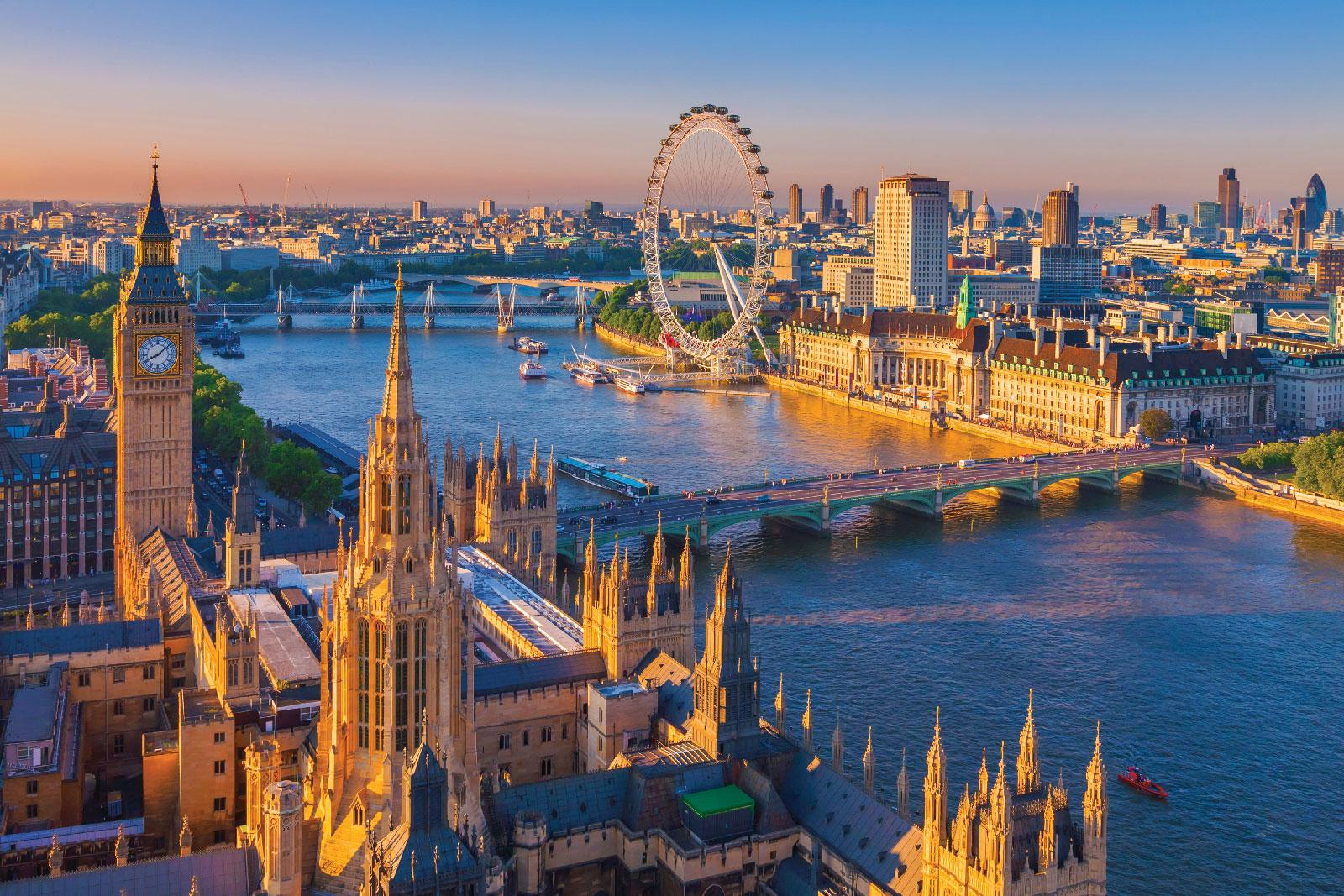How many parts does london consist of
How many parts does london consist of
Read the text about the parts of London. Complete the table below.
London consists of four parts: the financial and business part is called the City; the government center is in Westminster; the shopping and entertainment center is the West End; the industrial center is the East End.
The City of London is one of the major banking centers of the world and you can find banks of many nations in the famous Threadneedle Street. Here you can find the Bank of England and the Sock Exchange. The center of the country’s judicial system is in the western part of the city.
There are some historic buildings in the City. St. Paul’s Cathedral and the Tower of London are the most famous of them. St. Paul’s Cathedral is the work of the famous architect Sir Christopher Wren. It is one of the finest pieces of architecture in Europe. The interior of the Cathedral is very beautiful. It is full of monuments.
The Tower of London is one of the most ancient buildings of London. It was founded in the 11 th century by William the Conqueror. For many centuries the Tower was a fortress, a palace, a prison and the royal treasury. Now it is a museum.
The grey stones of the Tower could tell terrible stories of violence and unjustice. Two queens were executed here, and two princes murdered. The ravens still live here as part of its history. There is a legend that if the ravens disappear the Tower will fall. That is why the birds are carefully guarded.
Westminster is a political part of London. Parliament is in Westminster.
Opposite the House of Parliament stands Westminster Abbey. From Norman times British monarchs have been crowned there and since the 13 th century they have been buried there. Many other famous people are also buried in Westminster Abbey including statesmen, musicians and writers. In Poet’s Corner can be found status and the tombs of poets such as T. S. Eliot.
The West End is the name given to the area of central London. It includes Trafalgar Square, the main shopping areas of Oxford Street, Regent Street and Bond Street, and the entertainment centers of Soho, Piccadilly Circus, Leicester Square and Shaftesbury Avenue. Its name is associated with glamour and bright lights.
Trafalgar Square was built early in the last century to commemorate (праздновать, отмечать, служить напоминанием) the Battle of Trafalgar. Admiral Lord Nelson’s statue stands on top of a column in the middle of Trafalgar Square. The square makes a good place for people to meet.
Most of London’s big department stores are in Oxford Street and Regent Street.
Piccadilly Circus is the centre of night life in the West End. It is usually top of everyone’s list of things to see in London, because it is so well known.
London is famous for its live theatre, and there are over thirty theatres within a square mile.
It covers a wide area. There are kilometers and kilometers of docks, and the great industrial areas that depend on shipping. Down by the river, there are many wharfs (пристань, причал) and warehouses (товарный склад). The East End is unattractive in appearance, but very important to the country’s commerce.
It is also one of those areas of London where people from abroad have come to find work. For centuries foreigners have made London their home.
The East End markets are famous throughout the world. Petticoat Lane market takes place every Sunday morning and has become one of sights of London.
Текст по теме «London» с иллюстрациями и заданиями
Текс ознакамительного характера.Некоторые задания требуют поиска информации в других источниках
Просмотр содержимого документа
«Текст по теме «London» с иллюстрациями и заданиями»
London.
London, is the capital of Great Britain. It’s a very big city. London is situated on the river Thames. The Thames is the deepest river in Britain. There are 27 bridges over the Thames. Tower Bridge 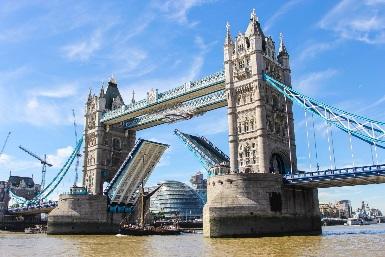
London is one of the most beautiful cities in the world. It is also a very old city. London is 2000 years old. London consists of 3 main parts: the City, the West End and the East End. 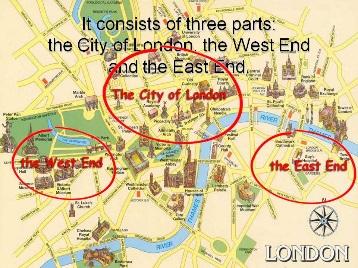
The political centre is Westminster. Westminster Abbey is there. 
There are many sights in London. Trafalgar Square 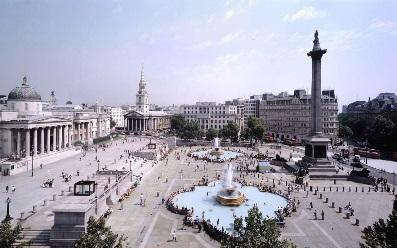
The Queen of England 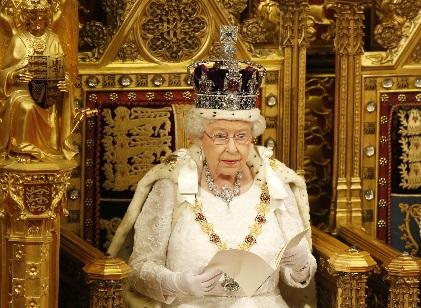
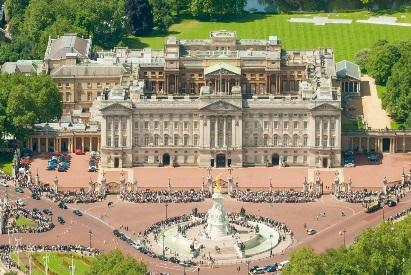
One of the greatest English churches, St. Paul’s Cathedral 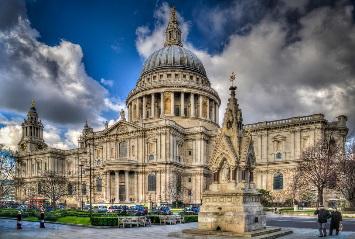
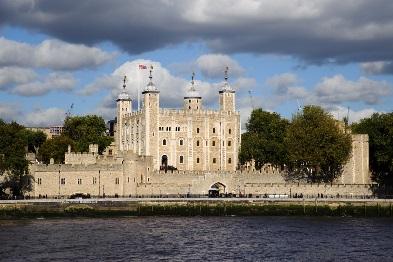
The most interesting museum is the Tower of London. The Tower of London was a fortress, a palace, a prison and the King’s Zoo. Now it’s a museum. There are always black ravens in the Tower of London. 
Ex. 1 Answer the questions:
1.What is the capital of Great Britain?
2.How many bridges are over the Thames?
3.How many people live in London?
4.What parts does London consist of?
5.What is the richest part of London?
6.What sights do you know in London?
Ex. 2 Match the words:
The British London
The National Museum
The Houses Square
The Tower Gallery
St. Paul’s Parliament
Ex. 3 Choose the right answer
Практическая работа по дисциплине «Иностранный язык» для ТОГУ
Упражнение 2. Найдите словам из рамки их значение.
borough, responsibility, local, gallery, dock, corporation, boundaries
council, authority
1. the moral or legal right or ability to control.
2. a town, or a division of a large town
3. the group of people elected to govern a particular town, or city
4. a group of these areas of water in a port and the buildings around them
5. a room or building that is used for showing works of art
6. existing in a particular place or small area
7. a large company or group of companies that is controlled together as a
single organization
8. something that it is your job or duty to deal with
9. a real or imagined line that marks the edge or limit of something
Упражнение 3. Переведите предложения на русский язык, обращая
внимание на слова, выделенные курсивом.
1. One of the defining features of 19th-century Britain was the widening
ownership of wealth.
2. The new government building uses neither Chinese nor European designs,
but instead it is a mix of postmodern architecture.
3. Changing the Guard ceremony takes place outside Buckingham Palace
every day.
4. British parliament traditionally consists of 2 chambers – the House of Lords
and the House of Commons.
5. The Royal Parks of London are lands originally owned by the monarchy of
the United Kingdom for the recreation of the royal family.
6. The City constituted most of London from its settlement by the Romans in
the 1st century AD to the Middle Ages,
7. The Whispering Gallery is probably the most famous of St Paul’s
attractions.
Упражнение 4. Найдите словам из колонки А синонимы в колонке В
A
traditional
royal
unique
kings and queens
district
divide
goods
go back
except
grow up
B
monarchs
return
separate into parts
apart from
area
become bigger
unusual
products
rich
old-fashioned
Упражнение 5. Перед прочтением текста ответьте на следующие
вопросы.
What do you know about London?
1. What is the origin name of London?
2. How many parts does London consist of?
3. What is the Tube?
4. Where does the Queen live?
5. What is double-decker?
6. What other famous places of London do you know?
Упражнение 6. Прочитайте текст.
The name London comes from the Romans who came to England in AD 43.
They built houses and other buildings and made a town on the both banks of the
River Thames. They called the town Londinium. It became a rich town with about
50,000 people living in it. But soon after AD 400, the Romans left Londinium to
go back to Rome, and nobody lived in the town for many hundreds of years until in
1066, William the Conqueror came to England from France to be king.
London covers 600 square miles with the population over eight million
people. It consists of 32 district called “boroughs” some of which were small
towns before. They are Greenwich, Chelsea, Paddington and others. Traditionally,
London can be divided into 3 main parts – East end, West End and the City. In the
center of London there are two small towns from which it has grown up – The City
and Westminster.
The City contains most financial institution of GB. It is commercial center
of the country. About half a million people come to work there every day. But on
weekends it almost deserted, except crowds of tourists visiting St Pauls’ Cathedral,
the Tower and other sights. The local authority for the City, namely the City of
London Corporation, is unique in the UK and has some unusual responsibilities for
a local council, such as being the police authority. It is also unusual in having
responsibilities and ownerships beyond its boundaries. The Corporation is headed
by the Lord Mayor of the City of London, an office separate from the Mayor of
London.
Westminster is not far away from the City. It includes Houses of Parliament,
Buckingham Palace, and government offices named Whitehall. In addition to royal
and political building it contains institutions important to intellectual and cultural
life of the country: University of London, British museum, National and Tate
gallery. Westminster is only a part of West End. The West End is worth visiting. It
includes historical places, famous parks, large hotels and shops. Reach people
enjoy spending their free time and money there. This name is always associated
with luxury and wealth.
The fashionable West End is quite different from the East End which is
situated behind the port of London. It is the workers region, is made up of great
industrial arears. East End is not a very attractive part of London with poor houses
of people who work in the docks and factories. English people are used to name
the City “the money of London”, the West End “the goods of London” and the
East End “the arms of London”. London size and population, its traditions and
historical associations, its trade and industries make it one of the greatest cities of
the world.
London and places of interest
London is the capital of Great Britain, its political, economic and commercial centre. It is the chief port of Great Britain. It is one of the greatest cities of the world. Its population is about 9 million people.
The origin of the city may be dated as the beginning of the 1st century A. D., when a tribe of the Celtic family settled near the Thames. The Roman town, LONDINIUM, grew up on the two hillocks near St. Paul’s Cathedral and Cornhill, not far from the Tower of London. The English are very proud of the long history of their capital. The city became extremely prosperous during the 16th century. Then in 1665 and 1666 two catastrophes occurred: the first was epidemic of plague which killed 100,000 citizens, and the second was the Great Fire which destroyed the whole of the City, including St. Paul’s Cathedral. London is a real museum of architecture. Most of the finest buildings date from the second half of the 17th century. At the beginning of the 19th century England was at the height of her power. During Queen Victoria’s long reign (1837 — 1901) the construction of the Underground began. And the first line between Paddington and Farringdon was opened.
At the same time the City became exclusively a commercial centre. The City is one part of London. Traditionally London is divided into: the City, the West End, West-minster and the East End.
The City is the heart of London, its financial and business centre. The City was described as a «busy emporium for trade and traders» as early as Roman times. The City has within its square mile such famous institutions as the Bank of England, the Stock Exchange, the Royal Courts of Justice and Guildhall. The City has its own Lord Major and Corporation as well as its own police force. Few people live in this part of London but over a million come here to work.
There’s a lot of famous ancient buildings within the City. The most striking of them is St. Paul’s Cathedral, Sir Christopher Wren’s masterpiece. It was built between 1675 and 1710 to replace the 13th-century cathedral which had been destroyed by the Great Fire.
The City of Westminster is one of the most famous historic areas in London as it contains both the seat of Government and the crowning place of kings and queens. Westminster was the first important inhabited area outside the City.
The Houses of Parliament and Westminster Abbey face each other across Parliament Square. Westminster Abbey is a beautiful Gothic building. In the 11th century Edward the Confessor founded a great Norman Abbey. But nothing is left of this church. Henry III wanted a brighter and bigger building. Master Henry, John of Gloucester and Robert of Beverly succeeded in the work of constructing Westminster Abbey. The work went on until the 18th century when Nicholas Hawksmoor altered the facade and added the towers. Almost all the monarchs since William the Conqueror have been crowned in Westminster and many are buried there.
There are memorials of many statesmen, scientists and writers in Westminster. Westminster Abbey is not a Cathedral. It is a «Royal Peculiar», royal property. It is dependent directly on the monarch.
The Houses of Parliament — the seat of British Parliament, which is officially known as the Palace of Westminster.
The first building was constructed as early as the 11th century (the magnificent Westminster Hall was built between 1097— 1099 by William Rufus). Most of the old palace was destroyed in a fire in 1834. The present Houses of Parliament were completed in 1865. The Houses of Parliament comprise the House of Lords and the House of Commons. The division of Parliament into two Houses goes back as 700 years.
The West End is the centre of London. There are historical palaces, museums, beautiful parks, large department stores, hotels, restaurants, theatres and concert halls in this part of London. One of the most beautiful palaces is Buckingham Palace, the official residence of the Queen. The Palace takes its name from Buckingham House which was built in 1703 as the home of the Duke of Buckingham and then bought by George III in 1762. Today the Queen lives at the Palace for only part of the year and when she is in her residence the Royal Standard is flown. Although the main palace is not open to the public items from the Royal Collection can be seen at the Queen’s Gallery.
The oldest of all the royal residences in London is the Tower of London.
The Tower today bears the official title of «Her Majesty’s Palace and fortress of the Tower of London».
Founded by William the Conqueror in 1078 the fortress was enlarged several times. Now it is a museum, which houses the national collection of armour and the Crown Jewels. For many centuries the Tower has been a fortress, the Royal residence, the Royal Mint, the first Royal Observatory. But it is perhaps most famous for being a prison.
The Yeomen of the Guard (Beefeaters) were originally formed to be a bodyguard for Henry VII. They still wear the Tudor uniform chosen by the King and now give guided tours of the Tower.
The ravens whose forefathers used to live in the Tower still live there. The Yeomen Raven Master is responsible for feeding and caring for the ravens at the Tower. There is a legend that if the ravens disappear the Tower will fall.
The broad Mall leads from Buckingham Palace to Trafalgar Square. Trafalgar Square, named to commemorate Nelson’s great naval victory of 1805, is dominated by the Nelson’s Column. On its pedestal there are four bronze reliefs cast from captured French cannon, representing scenes from the battles of St. Vincent, the Nile, Copenhagen and Trafalgar. The bronze lions at the corners of the pedestals are the work of Landseer.
From Trafalgar Square it is only a short way to Piccadilly Circus. In the centre of Piccadilly Circus is a bronze fountain. It was designed by Sir Alfred Gilbert in 1893.
Downing Street, 10 is the official residence of the Prime Minister.
London is very rich in art galleries. The National Gallery is one of the most important picture galleries in the world. The Tate Gallery is the right and necessary complement to the National Gallery as it contains modern and contemporary works particularly by English and French masters.
Cultural life of London would be impossible without the Royal Albert Hall, the Royal Festival Hall, the National Theatre and a great number of museums: the British Museum, the Victoria and Albert Museum, the Geological Museum, the Museum of Mankind, Natural History Museum and others.
If you go to the east of the City, you’ll find yourself in the East End. This is an industrial part of London. The Port of London is also in the East End.
A great amount of space in London is devoted to parks and gardens. Most of them used to be private gardens or hunting forests of kings and queens. Later they were transformed into their present design. Today nothing could be more relaxing and peaceful than a walk in a beautiful park.
EXERCISES
I. Answer the questions.
1. What is the population of London?
2. What parts does London consist of?
3. What part of London can be called its centre?
4. What masterpieces of architecture in Lon-don do you know?
5. Who is the architect of St. Paul’s Cathedral?
6. What is the historical value of the Tower of London?
7. What is the residence of the Queen?
8. What does a legend about the ravens in the Tower say?
9. What events does Trafalgar Square commemorate?
10. What gallery has a vast collection of modern and contemporary works by English and French masters?
3. The heart of London is …
a) Westminster.
b) the West End.
c) the City.
6. The oldest royal residence is …
a) Buckingham Palace.
b) the Tower of London.
c) Westminster Abbey.
7. The ravens in the Tower of London are taken care of because …
a) they are very old.
b) they are very rare.
c) of a legend.
a) the height of her power.
b) the Houses of Parliament.
c) the Royal Standard is flown.
d) Trafalgar Square.
e) the Prime Minister.
f) prosperous in the 16th century.
g) destroyed the whole of the City.
h) in Westminster.
i) the first Royal Observatory.
Answers
II. 1. b; 2. c; 3. c; 4. c; 5. b; 6. b; 7. c.
III. 1. f; 2. g; 3. a; 4. h; 5. b; 6. c; 7. i; 8. d; 9. e.
IV. 1. the seat of Government; the crowning place of kings and queens; 2. in the 11th century; 3. crowned; buried; 4. Downing Street, 10.
(Великобритания: Тексты для устных ответов и письменных работ на английском языке. Авт.-сост. И. Ю. Баканова)
LONDON THROUGH QUESTIONS
1. What is London?
London, the capital of Great Britain, is two thousand years old. It is the largest city in Britain and one of the largest in the world. Its population is about 9 million people. It is also a huge port city.
2. How was London founded?
It was founded in the first century A.D. by the Romans. The Romans went to England many, many years ago. They built a town on the river Thames. The name of the town was Londinium. The Romans built Londinium near the river. The place for the town was very good. Soon the Romans built a bridge over the river Thames.
Londinium got bigger and bigger. The Romans built many roads from Londinium to other parts of Britain. After the year 400, the Romans left Britain. We do not know much about Londinium between the years 400 and 1000 A.D. The River Thames has always been part of London’s history. In Roman times Londinium was a small town with the Thames River at its centre. Now, London is a very large city and the Thames is still at the centre of London.
3. Who was William the Conqueror?
In 1066 William the Conqueror and his people went to England from Normandy, France. He became King of England, and lived in London. Many of his people also lived in London. But William was afraid of the English, and of Londoners. Therefore he built the White Tower to live in.
4. What calamities did London suffer in 1665 and in 1666?
In 1665 there was a terrible plague in London. Many people left the city and went to the villages in the surrounding countryside.
In 1666 the Great Fire of London ended the plague but it also destroyed much of the city.
5. Where and when did the Great Fire of London start?
In those days people usually built houses of wood and they often were near one another. Sometimes there were fires in the city, but they were usually very small. Then came 1666, the year of the Great Fire of London.
On Saturday the 2nd of September 1666, there was a strong wind from the river and the big fire began to spread. It started in the house of the king’s baker, near London Bridge. The fire burnt until Thursday. Many houses in London were burnt. The fire burnt for four days and destroyed 80% of the city. After the Great Fire people rebuilt the city.
6. What was London from 369 till 412? How was it known at that time?
From 369 until 412 London was the capital of Britain, back then it was known as Augusta.
7. What museums are most famous and important in London?
The most important museums in London are: The British Museum, The National Gallery, The Tate Gallery and The Victoria and Albert Museum.
8. Which museum presents the finest English paintings and those of other countries of the world?
The National Gallery has a collection of Italian, Dutch, German and French pictures. It is rich in paintings by Italian masters such as Raphael and Veronese. It is open 7 days a week and admission is free.
9. When was the British Museum built?
The British Museum, the largest and richest of its kind in the world, was built in the middle of the last century and was initiated in 1753. The collection is enormous and covers ancient Greece, Rome, Egypt, China, Japan. George II gave the royal library to the museum in 1757.
10. What is the Tate Gallery?
The Tate Gallery opened in 1897 and is named after Sir Henry Tate. He presented his collection of 65 paintings to the nation. Today the collection of the Gallery is very large.
11. What Museum grew out of the collection of objects bought for the Great Exhibition in London in 1851?
The Victoria and Albert Museum. It is named after Queen Victoria and her husband, Prince Albert. (V & A)
12. Of London’s main libraries, which have you read about?
London is one of the most literary-minded cities in the world. There are many libraries there. The most important are:
The Capitular Library of St. Paul’s Cathedral
The British Museum Library
The London Library in St. James Square
Guildhall Library
Holborn’s Central Library
Kensington’s New Central Library
13. What London library is the biggest one?
The British Museum Library is the biggest one. It contains about 6 million books with the large circular Reading Room as the centre of the Museum.
14. What library was destroyed by the Great Fire of London?
The Capitular Library of St. Paul’s Cathedral, the tallest library in London, was destroyed in the Great Fire of London in 1666. The library was refounded and the collection was built up again.
15. What library occupies the largest municipal public library building of London?
Kensington’s new Central Library.
16. London has no single centre. Do you know why this is so?
London has a number of centres each with distinct characteristics. They are: the City – the financial and business centre; Westminster – the administrative centre of London; the West End – the aristocratic part; the East End – the poorest part of London. The growth of the city explains the fact that London consists of several parts.
17. What is “the City”?
The City is the heart of London, the commercial and business part. Many banks, offices and firms are concentrated there. It is the ancient part of London. Only five thousand people live in the City, but about half a million people come there to work.
18. What is Fleet Street famous for?
Fleet Street is the centre of Britain’s national newspapers. The Daily Telegraph and the Daily Express have offices there. The Times, and The Guardian are nearby.
19. What can you say about Tower Bridge?
Tower Bridge is situated near the Tower of London. It was built in 1894. It regulates a large part of the impressive traffic of the port of London.
20. What is the Tower of London?
The Tower is one of the most ancient buildings of London. It is situated in the city. It was founded in the 11th century by William the Conqueror. At the centre of the Tower of London there is the White Tower (1078). It is nearly 30 metres high. The walls are white, tall, strong and thick. It has been a palace, a fortress, a prison, a zoo, a royal treasury, and now it is a museum. There are always black ravens in the Tower of London. People keep them and look after them very well as they believe that London will be rich as long as ravens live there.
21. What do you know about St. Paul’s Cathedral?
St. Paul’s Cathedral is a masterpiece of the famous architect Sir Christopher Wren. It took him 35 years to construct this beautiful building. You can see the huge dome with a golden bell and cross on the top. The Cathedral is full of monuments. There is the Whispering Gallery there, which runs round the dome. People say that if someone whispers close to the wall on one side, a person with his ear close to the wall on the other side can hear what is said.
Many famous people are buried in the Cathedral: Nelson, Wellington, Wren and others. St. Paul’s Cathedral was destroyed in 1666, the year of the Great Fire of London. Then the architect rebuilt it. Now it is a beautiful building with many columns and towers. In one of its towers there is one of the largest bells in the world.
22. People say, that, if someone whispers close to the wall on one side of this building, a person with his ear close to the wall on the other side can hear what is said. What place is it?
It’s the Whispering Gallery of St. Paul’s Cathedral.
23. What do you know about the Palace of Westminster? Where is it situated? What government office is there?
On the left bank of the Thames there is Westminster Palace, known as the House of Parliament. It is the seat of British Parliament. The Palace is in Westminster, a central and important part of London.
24. When does the flag fly on top of Victoria Tower? When does a light burn above Big Ben? What does it signal for the people of London?
The Palace of Westminster together with Victoria Tower and the Clock Tower form an architectural complex. The flag flies on top of Victoria Tower when Parliament is in session. When the questions are very important and Parliament works all night, a light burns above Big Ben in the Clock Tower. This reminds the people that Parliament is watching over the nation’s interests.
25. Why is the bell in Clock Tower called “Big Ben”?
Big Ben is the name of the clock and the bell in the clock tower, one of the towers of the Houses of Parliament. You can hear Big Ben chime every hour. The clock and the bell got their names after Sir Benjamin Hall. He was a tall man, whose nickname was Big Ben. This is why people know the clock as Big Ben.
26. What is Westminster Abbey famous for?
This church is more than 900 years old. Westminster Abbey is famous for its architecture and historical associations. It is the church where nearly all the kings and queens have been crowned and where many of them are buried. It is also famous for its Poets’ Corner.
27. What is Poets’ Corner?
Westminster Abbey is famous for its Poets’ Corner. Many great writers are buried there. They are: Dickens, Hardy, Kipling and others. There are also memorials to Shakespeare, Burns, Byron, Scott.
28. What is Downing Street famous for?
Whitehall is a wide street which runs from Parliament Square to Trafalgar Square. If you go down Whitehall, on the right you will see a small street where the British Prime Minister lives. He lives at number 10 Downing Street.
29. Why was the square in the centre of London named Trafalgar?
The centre of London is Trafalgar Square. Some people say it is the most beautiful place in London. It was named in commemoration of Nelson’s great victory of 1805 over Napoleon. In the middle of the square there stands a tall column. It is a monument to Admiral Nelson. Four bronze lions look at the square from the monument. There also are two beautiful fountains in the square.
30. Where is Piccadilly Circus situated? What is it famous for?
Piccadilly Circus is the centre of night life in the West End. It is also a West End shopping Centre. There are many shops there. Groups of people like to sit around the statue of Eros, the god of love.
31. What is Buckingham Palace? Whose palace is it? What important buildings are there near it?
The Buckingham Palace is a Royal residence. It was built in 1703 by the Duke of Buckingham. It is now the official home of Queen Elizabeth and the British Royal Family. There are nearly six hundred (600) rooms in the palace and 3 miles of red carpet. Buckingham Palace is like a small town with a police station, two post offices, a hospital, a bar, two sport clubs, a disco, a cinema and a swimming pool. About 700 people work for the Palace. Two men look after the 300 clocks. The Queen’s Gallery is in Buckingham Palace Road as well as the Royal News.
32. What can you say about the ceremony of the Changing of the Guard?
Every day at 11 o’clock in the morning there is a famous ceremony near Buckingham Palace. This is the Changing of the Guard. Many tourists want to see this ceremony, as thirty guardsmen march to the Palace and take the place of the retiring guard.
33. What is Hyde Park famous for?
London is a green city with a lot of parks. Hyde Park is one of the most popular parks. It has been a royal park since 1536. It is the largest park in London. Lake Saprentine is in the middle of the Park. It is a custom for some people to swim in it on Christmas Day.
Hyde Park is famous for its Speaker’s Corner. People go there when they want to tell other people about their political opinions. Another attraction is a horse-riding path known as Rotten Row. It is a mile and a half long.
34. Are there any parks in London?
Yes, there are many parks and gardens in London. The most famous are:
Hyde Park, Regent’s Park, St. James’s Park.
St. James’s Park is the oldest one. It is near Buckingham Palace.
Regent’s Park is the most elegant one, with gardens, lakes and the Zoo. There are about 6 000 (six thousand) animals there.
Hyde Park is the largest one. It includes the adjoining Kensington Gardens. In Kensington Gardens there stands the Albert Memorial. Albert Hall is nearby. The famous Promenade Concerts are held there.
35. What is the East End?
London is a big city consisting of several parts. The poorest part of London is called the East End. There are poor houses and dirty streets. Most working people live in the East End. All the factories, mills and docks are in the East End. The East End markets are very famous and the East End is also the centre of the clothing industry in London.
36. What is the West End?
The West End is the richest and most beautiful part of London. Fine buildings, theatres, museums, and big shops are there in the West End. The best streets and parks are there, too.
37. What people are called “cockney”?
Traditionally someone born in the East End is known as a cockney. Now this name is given to anyone who speaks like a Londoner. Cockneys have problems with “th” and say “nuffink” instead of “nothing”.
38. Traffic in London differs from that of the Continent, doesn’t it?
Yes, it differs. In England they keep to the left, not to the right. In England people say: “If you go left, you go right. If you go right, you go wrong”.
39. What can you say about London traffic?
In London you can see many buses, cars, taxis, and the London Underground. There are two kinds of buses in London the red double-decker and the red single-decker. There are no trams in London. London traffic differs from that of the Continent.
40. What do you know about London’s theatres?
Most British cities have a theatre, but London has the greatest number. There are over 50 theatres in London’s West End and about 35 smaller theatres. Going to the theatre is not only popular, but also expensive. The most famous British theatres are the National Theatre and the Barbican. There is also a National Youth Theatre, with a high standard of performance. Opposite the Old Vic, home of the National Theatre Company, there has been built the Young Vic.
41. What is the Ceremony of the keys?
Every night at 10 p.m. at the Tower of London this Ceremony of locking up of the Tower for the night takes place. Five minutes before the hour the Headwarden comes out with his keys and an old lantern. He goes to the guardhouse and cries, “Escort for the keys.” (He closes the gates and goes to the sentry.) “Halt, who comes there?”
– “The keys.”
– “Whose keys?”
– “Queen Elizabeth’s keys.”
– “Advance Queen Elizabeth’s keys. All’s well.”
42. London Sightseeing Tour
Places of Interest
Piccadilly Circus
Covent Garden
Westminster Abbey
Buckingham Palace
Regent’s Garden
Trafalgar Square
Tower of London
1. It was a big fruit and vegetable market. Now it is a tourist shopping centre with cafes and restaurants.
2. It is the London home of the Queen. When the flag is on the top, she is at home.
3. It isn’t a circus, it is the meeting point of six streets.
4. It is a royal church. Here you can see the tombs of many British Kings and Queens and other famous people.
5. It was a fortress, a royal palace and later a prison. It is a museum now.
6. On the column in the centre there is a statue of Admiral Nelson, who defeated the French in the battle in 1805.
7. It is a royal park containing the London Zoo. It is one of the biggest zoos in the world.
